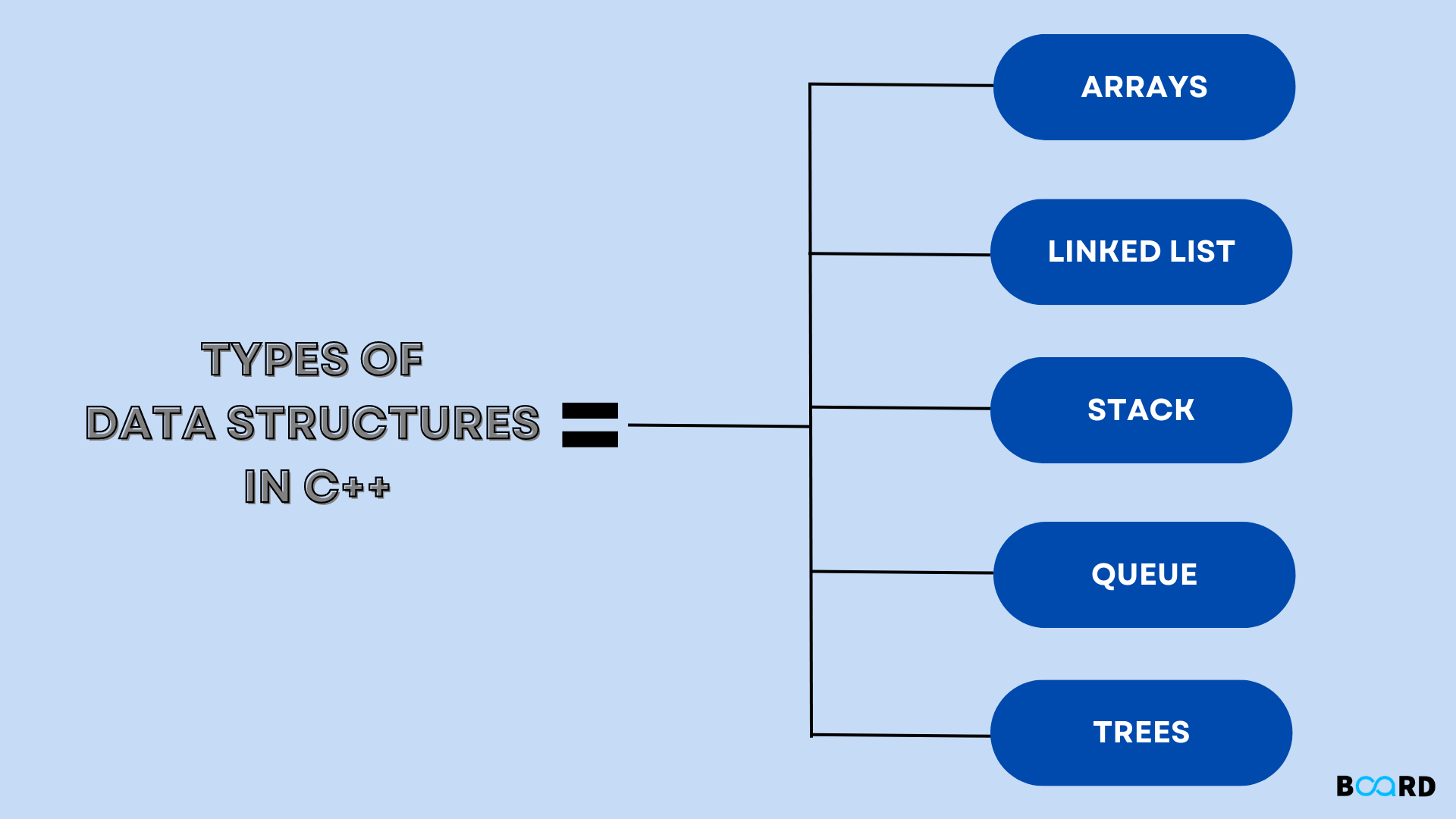Mastering Fundamentals: C++ and Data Structures
Guide To 5 Data Structures In C++

Introduction
As is well known, the C++ programming language provides its users with a number of interesting and practical features and functions. Additionally, object-oriented programming is supported. Some important approaches, like encapsulation, abstraction, inheritance, and polymorphism, may be carried out using this methodology. Data structures are a helpful and necessary component of programming in C++. Data activities including data representation, storage, organization, and many more are carried out on data with the aid of data structures.
Data Structures - Understanding the Concept
Data structures allow you to arrange data in a certain way so that it may be utilized in a useful way. The information in memory can be organized in a variety of ways. Please understand that this is a set of methods that may be used to organize data into memory in any programming language, not a programming language.
Types of Data Structures in C++
Data structures in C++ may also be divided into two categories.
1. Linear Data Structure: A data structure is said to be linear if its elements are arranged in a sequential manner. Stacks, queues, and linked lists are some examples.
2. Non-Linear Data Structure: These are not linear data structures. These data structures have several levels. For instance, trees, graphs, etc.
3. Static and Dynamic Data Structures: The size and structure of static data structures never change. It is linked to certain memory regions that were fixed at compilation time. During programme execution, a data structure might be enlarged or shrunk depending on your requirements. And these data structures fall within the category of dynamic data structures.
Operations on Data Structures
The fundamental operations that you may carry out on data structures in C++ are as follows:
Insertion: The process of including a fresh data piece in the data structure. A data piece that already exists in the data structure is deleted or removed with this operation.
Traverse: This procedure involves processing and displaying each data element in the data structure as it is traversed.
Search: Looking for a certain data piece within the data structure.
Sorting: In this procedure, all the data items in the data structure are arranged in either ascending or descending order.
Merge: Bringing together related data components from multiple data structures is what the act of merging entails.
C++ Arrays
Simply put, an array is a collection of related data types that are stored together in close proximity in memory and stores basic data types. A programmer may simply access the items with the aid of arrays. You may attempt to define 20 variables, such as student1 marks, student2 marks, etc., if you wish to keep the grades of 20 students. What if I told you that you could accomplish all of those tasks using a single variable called array? You can get to those elements by using a few lines of code.
Example:-
C++ Linked List
A collection of connected nodes can be referred to as a linked list. This data structure is linear. A linked list has two components, such as:
1. Data Part: Contains the user's data.
2. The next element of the linked list is indicated by the pointer part. Nodes are kept in various places.
Singly Linked List, Doubly Linked List, and Circular Linked List are three different forms of linked lists. We have made a three-member singly linked list below.
Stack in C++
A linear data structure is the stack. It adheres to the Last-In, First-Out principle. Therefore, the last value you put will be the first to emerge if you push something into the stack. Only one end of the stack—the top of the stack—can be used for insertion and deletion operations. In C++, a stack can be implemented in one of two ways:
- Statically: An array can be used to implement a stack. It permits the allocation of static memory for its data pieces. The stack here receives a copy of the array's characteristics.
- Dynamically: A linked list can also be used to implement a stack. It enables the dynamic allocation of memory for its data elements. In this, the linked list's characteristics are transferred to the stack.
Queue in C++
The linear data structure queue is well-known. It adheres to the first-in, first-out principle. So, if you push anything into the stack, the stack's top value will emerge. In the queue, insertion operations may be performed from the back end, while deletion operations can be performed from the front. The queue can be used in one of two ways:
1. Statically:- A queue can be created using an array. It permits the allocation of static memory for its data pieces. The queue here receives a copy of the array's features.
2. Dynamically:- A linked list can be used to implement a queue as well. It enables the dynamic allocation of memory for its data pieces. In this, the queue replaces the linked list's characteristics.
C++ Trees
It is a quite intricate and difficult data structure. In mathematics, a tree is referred to be a finite and non-empty set of elements. Hierarchical data structures include trees. Numerous nodes make up a tree. In this data structure, the parent-child connection is maintained. This data structure is not linear like an array, a structure, a linked list, etc. A non-linear data structure, that is.
Summary
In this topic, we covered C++'s data types and data structures. The many categories of data structures, including simple, complex, static, and dynamic data structures, were also covered. The tutorial's trees, stacks and queues, linked list, and arrays were then covered.
